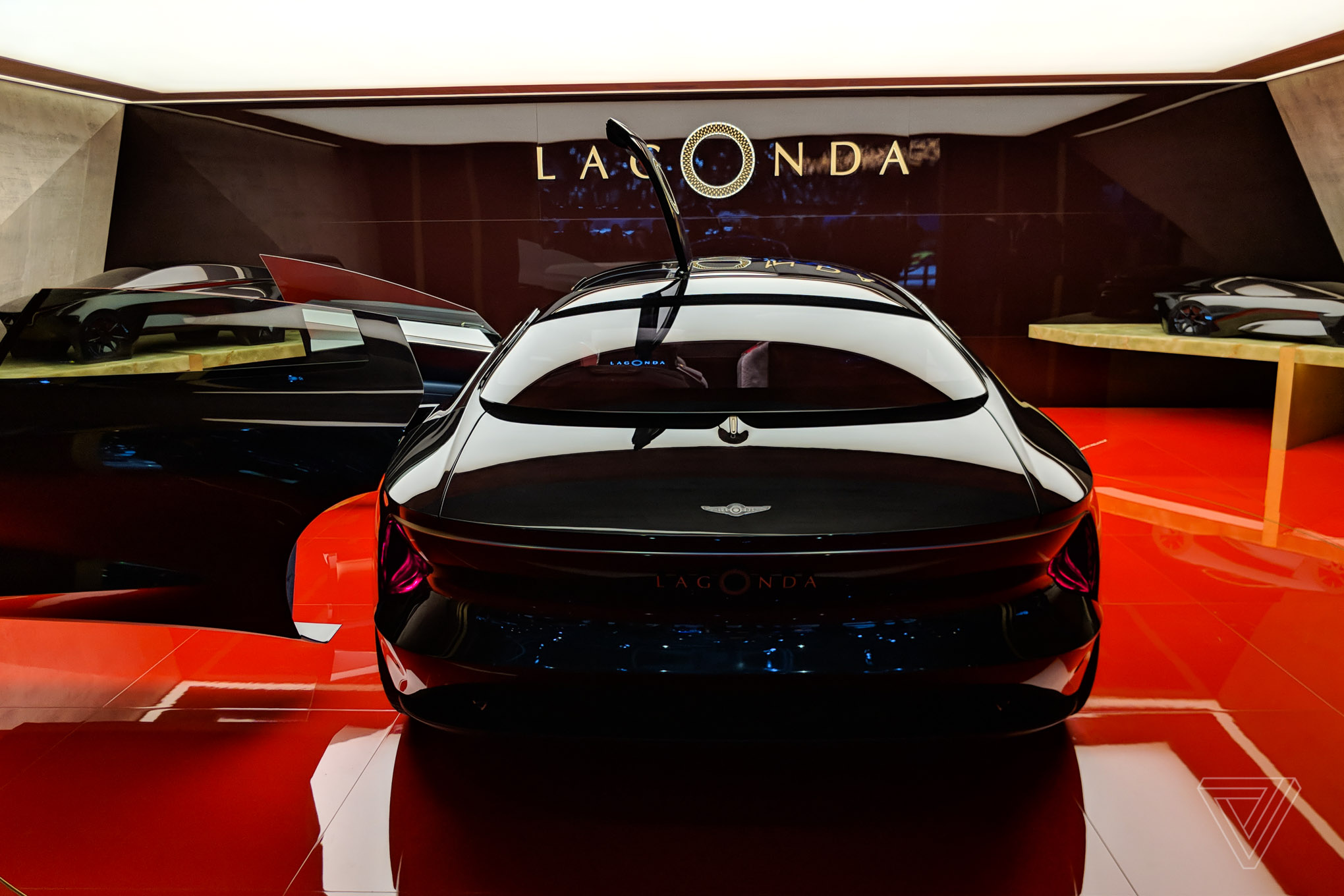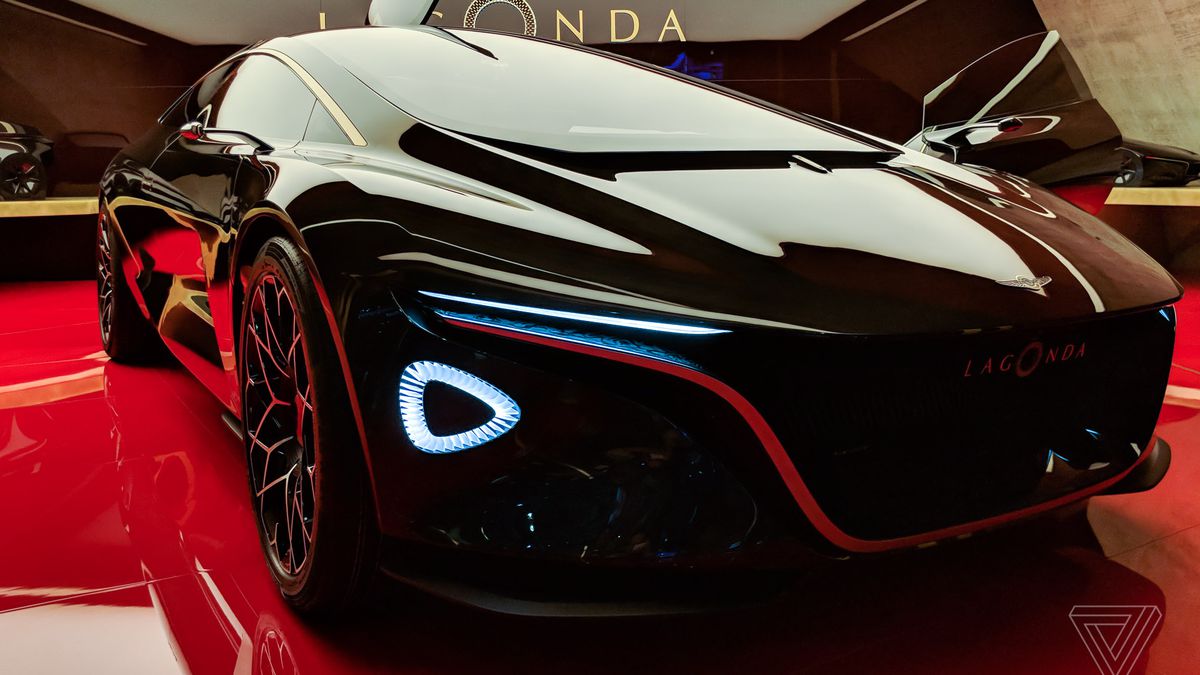/cdn.vox-cdn.com/uploads/chorus_image/image/58938447/20180307_astonmartinlagonda_vladsavov37.0.jpg)
Sometimes mere photos don’t do justice to the striking nature of an object, and Aston Martin’s Lagonda Vision Concept is one such thing.
This concept car is a throwback to the old times when concept designers didn’t have to concern themselves with any measures of practicality or feasibility. It has lush carpets throughout, the seat backs are made of handwoven wool, and Aston Martin recruited Savile Row tailors to make sure everything was cut and shaped with meticulous precision.

Legroom inside the Lagonda is so vast that even pro basketball players will find it comfy and accommodating. Should you wish to stand grandly inside your luxury vehicle, the Lagonda has you (un)covered: part of the roof opens up along with the huge doors that are more the size of farmyard gates than regular car doors.
Then there’s the size and shape of the Lagonda Vision Concept. It’s huge, with a thoroughly exaggerated rear end and huge, sweeping curves that span the entire length of the car. Most car designs start off with such grand lines, but they ultimately get refined and whittled down to something more realistic, something that could be driven on real roads. Aston Martin seems to have decided to shrug off those considerations and just do its best effort at matching the Rolls-Royce Vision 100 limousine for sheer excess.

In any case, though there’s a steering wheel inside the Lagonda, the primary use of this car is imagined to be under autonomous driving conditions. Aston Martin anticipates offering Level 4 autonomy, which is to say it’ll drive itself under most conditions, and it’s up to you whether you want to pivot your seat to use the steering wheel or face your fellow members of the bourgeoisie inside the car.
Lagonda is intended to grow into its own brand, as a sort of luxury tier to Aston Martin’s already exclusive range of cars. The hope is that it will become the world’s first “zero emissions” luxury car brand when production of (obviously tamer) real-world cars begins in 2021. The Lagonda Vision Concept is deliberately outlandish and extreme, setting extraordinary boundaries to allow Aston Martin’s designers the biggest possible canvas on which to concoct the company’s future. Its proud and gleaming design is in stark contrast to humbler current trends in car design, but I appreciate it for what it is: eccentricity at its finest, most unrestrained best.
